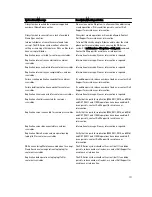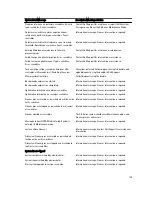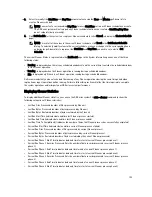
Scheduling DR Series System Operations
The most important thing to remember when scheduling critical DR Series system operations is that you want to ensure
that you perform each of these operations at a time when it will not overlap or interfere with the running of any of the
other key system operations.
By better scheduling when you run system operations, you can optimize your system resources and make it possible to
achieve the best possible DR Series system performance. To do this, plan and schedule time periods in which to perform
the following critical system operations:
•
Data ingests (which are dependent upon the DMAs)
•
Replication process
•
Cleaner process (space reclamation)
The main goal in planning and scheduling operations is running the Cleaner and Replication operations at times when
they do not overlap or interfere with other important system operations. You want to make sure that by properly
scheduling and planning, your system can perform each of these key operations independent of the other.
The best practice is to run these two operations during non-standard business hours, so that they do not conflict with
any of your other backup or ingest operations. In short, efficient scheduling maximizes the best use of your system
resources.
Dell recommends scheduling resource-intensive operations during specific time periods when no other system
operations are being performed. This approach is called
windowing
, which requires scheduling a specific block of time
(or “window”), each with a set starting and stopping point so that you can perform data ingests, replication, or space
reclamation operations without interfering with the running of any other operation.
Creating a Cleaner Schedule
Performing scheduled disk space reclamation operations are recommended as a method for recovering disk space from
system containers in which files were deleted as a result of deduplication. The best method is to schedule a time when
you can run the Cleaner on your DR Series system with no other planned processes running. Alternately, another
method lets the Cleaner process on the DR Series system run whenever it determines that there are no active data
ingests.
NOTE: Even if no Cleaner schedule is set, but the system detects that there is disk space that can be reclaimed,
the Cleaner process runs. However, the Cleaner will not start until the following conditions are met: it detects that
there are no active data ingests, that two minutes of system idle time have elapsed since the last data file ingest
was completed, and that the Replication process is not running (the Cleaner process runs as a lower system
priority operation than the Replication process).
NOTE: Running the Cleaner while ingesting data, reduces system performance. Ensure that you schedule the
Cleaner to run when backup or replication is not in progress.
NOTE: The Cleaner Schedule page displays the current DR Series system time zone and current timestamp (using
this format: US/Pacific, Fri Nov 2 15:15:10 2012).
To schedule Cleaner operations on your system, complete the following:
1.
Select Schedules
→
Cleaner Schedule.
The Cleaner Schedule page is displayed.
2.
Click Schedule to create a new schedule (or click Edit Schedule to modify an existing schedule).
The Set Cleaner Schedule page is displayed.
182
Содержание DR series
Страница 1: ...Dell DR Series System Administrator Guide ...
Страница 10: ...10 ...
Страница 34: ...34 ...
Страница 138: ...138 ...
Страница 160: ...160 ...





















